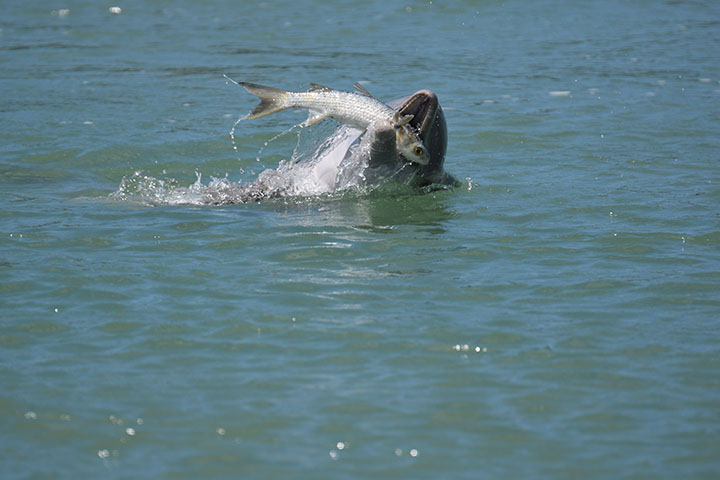Since 1970, we’ve been studying Sarasota Bay’s dolphin community — getting to know their lineages, their companions and even their favorite hangouts. But understanding the dynamics of a population of animals also includes understanding how they interact with their environment, especially learning about the types of food they prefer, the places where they find it and the techniques they use to catch it.
Each year, we monitor the abundance, diversity and size structure of fish populations in seagrass meadows in Sarasota Bay; the information we gather helps us understand how dolphins choose their feeding locations and which species they prefer to prey on.
Many of the fish eaten by Sarasota Bay dolphins are found in seagrass meadows. That means many of the dolphins in this population feed in areas with abundant seagrasses, as opposed to more open-water habitats like coastal waters or open bays. The top species they eat are pinfish, sheepshead, Gulf toadfish, ladyfish, pigfish, spot, striped mullet (aka black mullet), menhaden, Atlantic thread herring, and spotted seatrout.
Knowing what dolphins prefer to eat — and understanding their life histories — helps us better understand what happens to the dolphins when the abundance or location their preferred prey changes — for instance, during a red tide or with the loss of seagrass meadows, which serve as nursery habitats and refuges for fish. In turn, that can help us understand what conservation measures resource managers can enact to help protect these critical food sources, in turn helping to protect dolphins.





